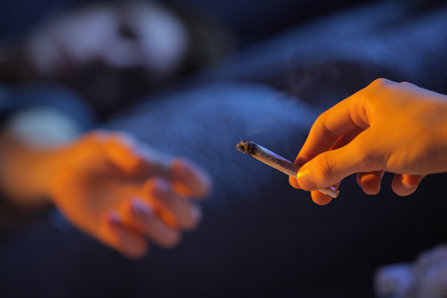Is Marijuana Really Medicine?

It’s been more than twenty years since voters in California legalized the use of marijuana as medicine. Since then, pro-marijuana advocates have won in state after state by appealing to voters’ sense of compassion. Surely, voters would want children to stop having seizures, they would want those on chemotherapy to feel like eating so they don’t waste away, they would want people with severe muscle spasms to experience relief. Thus far, voters in more than two dozen states have agreed. The problem is that marijuana lacks many of the characteristics of the standardized and tested medications that doctors usually prescribe. It, therefore, becomes difficult for a doctor to responsibly recommend it to patients.
In Florida, for example, a new medical marijuana law was passed in 2016 and businesses in the state are gearing up to offer various cannabis products to patients. But doctors are hampered in their efforts to utilize the drug. As noted in an article in the Journal of the American Medical Association, the drug comes with the following drawbacks:
1. Doctors did not receive training on this drug when they were in medical school.
2. The educational requirements vary from none (California) to an eight-hour course delivered in one day in Florida that may still leave a physician unprepared to advise patients on its use. In Vermont, one medical school has just added Medical Cannabis to their curriculum.
3. The smoked form of the drug and the edibles found in dispensaries and retail stores across the country have never been approved for medical use by the Food and Drug Administration.
4. The benefits and adverse side effects are as yet inadequate documented with proper studies and tests.
5. There are no authoritative references on dosage, indications or contraindications, or ones that outline the difference between varieties of cannabis.
6. The Drug Enforcement Administration still considers marijuana to be a restricted drug with high potential for abuse and no accepted medical use so some doctors worry about their licenses with the DEA to prescribe other controlled medications like painkillers.
7. Cannabis products are quite unlike drugs from pharmaceutical companies in that purity and dosage are unregulated. So one patient could buy a product that is dangerously potent and other could get one that was weak and ineffective.
8. At this time, clear guidelines on how to use the drug safely and effectively are lacking.
As Dr. Donald Abrams from the University of California San Francisco stated, “There’s insufficient to no evidence for most of the claims [about medical marijuana]. If you like having evidence on which to base your patient recommendations, it’s really not available.”
Like Opium, There’s Evidence of Some Benefits
The products of the opium poppy go two ways – some are made into pain relievers that make life tolerable for the patient just out of surgery or one who’s suffered an injury. Other opium makes it way into illicit hands and becomes heroin. Cannabis is similar. There is sufficient evidence of some medical benefits but then the drug is also used in a destructive, addictive manner.
In an extensive research project, Dr. Abrams and his coauthors reviewed more than 10,000 scientific studies on cannabis to determine which of them were adequate to substantiate medical benefits of cannabis. They found that the strongest evidence existed to support the treatment of the chronic pain and muscle spasms associated with multiple sclerosis and chemotherapy-induced nausea and vomiting. But pro-marijuana advocates list twenty-three different diseases they consider treatable with cannabis. That’s a rather large discrepancy.
What is the Average Medical Marijuana Patient Like?
According to a survey completed by researchers at the University of California Santa Cruz, most Californians who obtained a medical marijuana card were male, white, employed and complained of back or neck pain, insomnia or anxiety. All these conditions may be hard to pin down to a specific cause and may in some patients be simply attributable to stress. Young adults have also reported they complained of back pain or anxiety just so they could get easy access to medical marijuana in order to get high.
In New York State, 96% of patients had used marijuana before becoming patients in the medical marijuana system. More than 60% described daily or near-daily use. About 40% had used opioids non-medically at some time in their lives, and nearly as many had used hallucinogens or cocaine.
It’s no secret that it’s easy to game the medical marijuana system and obtain the drug for reasons that have nothing to do with a diagnosable illness. Even Forbes carried the story of a young man in San Francisco who was able to get a diagnosis after an online conversation with a doctor and then receive a delivery of his medical marijuana minutes later. Within an hour, without leaving home, he had his drugs.
Nora Volkow of the National Institute on Drug Abuse offers a reasoned viewpoint on this subject.
“As public approval for medical marijuana grows, we need to ensure that our policy decisions are science-based and not swayed by the enthusiastic claims made widely in the media or on the Internet. We need to support and encourage increased research on marijuana’s potential benefits and conduct intensified research on the cannabinoid system to inform the development of safe, FDA-approvable drugs. But the existing science on marijuana’s adverse effects on youth demands we also proceed with caution in making policy changes that could result in increased use of or exposure to marijuana by young people.”
Hopefully, the next few years will bring us to a system in which the beneficial components of cannabis can be utilized to decrease suffering in the same way that opium ultimately provides painkillers to alleviate intolerable pain. But without its intoxicating effects and without sending a message to our youth that use of this drug is without risks.

